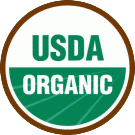Order products!
About our farm
Farm blog
Why grass fed?
Why organic?
Why soy-free?
Why eat local?
Our difference
FAQ's
Bone broth
Organic chicken
Organic eggs
Organic pork
Frozen is Fresher
Testimonials
Recipes
Contact us

From our family to yours...
We are a 100%-owned family farm, so you can rest assured that everything that bears our name is produced on our farm with the greatest attention to every detail.
You see, we truly care about the health of our family, and we care about yours too.
Our mission is to provide families with truly healthy meat.

Farm Blog
Posted by: Trevor
January 30, 2012
Now that we've had some really cold weather, it's time to start tapping for sap.
Many people are surprised to discover that Big Leaf Maples (which is what we have here in the lower mainland) can be tapped for sap. Some people think only Ontario and Quebec can do that, since they have Sugar Maples.
It's true that Sugar Maples have a little higher sugar content in their sap than our local Big Leaf Maples. But that's not a problem --- it just means for every gallon of sap we collect there is a little less syrup than what they'd get back east.
But, our tapping season is longer than theirs --- we can tap here most of the winter if we want to.
We have plenty of Big Leaf Maples here on our farm. But we are selective about which ones we tap. We look for larger trees, not small ones. We also look for ones growing on a south-facing slope, so they get the most sun. They'll produce the best.

One of our Big Leaf Maple trees. It's on a south-facing slope, so it should produce well.
Tapping the tree doesn't ruin it --- the tree heals itself after you remove the tap. You can keep tapping the same tree year-after-year, just not in exactly the same spot. The tree heals the tap-hole but there is still a small "scar" where the hole was.

See the small "scar" from where we drilled last year â€" the holes heal very quickly.
We usually choose a sunny winter day to start our taps --- one where the temperature is cold at night and warmer in the day.
We drill the hole about 1 or 2 feet off the ground, on the south side of the tree, using an auger drill bit (the type of drill bit matters). We use a power drill, but the old-fashioned way would be with a hand drill. Be sure to get all the shavings out of the hole, otherwise they’ll plug the tap.

We use a power drill and an auger bit to drill the tap hole.
If the day is warm enough, we can usually see sap starting to flow as soon as we drill. The tap hole itself will probably be productive for a few days, or a few weeks --- it's hard to know why some holes stop producing, they just do.

These freshly-drilled tap holes are already producing sap --- see the drops coming out.
Once the hole is drilled, it's time to insert the tap (called a spile) --- we use plastic spiles (we tried the old-fashioned metal spiles but they don't work well if you want a totally enclosed system --- and here on the "Wet" coast an enclosed system is the only way to keep rain out). Just a light tap with the hammer will keep the spile in place --- you can tell by the sound of the hammer when the spile is in far enough.

Tapping in the spile with a hammer.
We connect tubing directly into the spile (the old-fashioned method of an open metal spile drip-drip-dripping into an open bucket looks quaint but it doesn’t work here in the lower mainland where we get wind and rain --- that's why an enclosed system is the only way to go). This way, we won't lose a drop --- plus, the rain can’t get in.

The tubing connects directly into the spile --- an enclosed system.
Next, we run the tubing into a wine bag (purchased from the local home-brew store) where we've drilled a hole in the lid for the tubing to precisely fit through. The bag sits securely in a milk-crate (so the bag won't roll down the hill as sap pours into it).

The sap is already beginning to flow. Now to connect the tube to a sealed wine-bag.

This maple tree is now tapped and ready to produce.
That's all there is to it. As the bag fills up, we collect the sap and run it through a filter, into a jug or container and freeze it. It is 100% fresh-frozen maple sap, and it tastes wonderful --- it's really a much more satisfying drink than bottled water --- and healthier too (at least we think so). It has a very slight sweetness and is loaded with vitamins and minerals. In Korea (and elsewhere in Asia) it is consumed in massive quantities and known as "gorosoe" --- they believe there are health benefits to it. We think so too, but it's also a very pleasant drink.
At the end of the season, we take some of the frozen sap and boil it in large steel pots. As it boils away the steam, it leaves behind thick maple syrup --- it takes about 60 gallons of sap to make 1 gallon of syrup. We take it off the heat once it gets to about 67% sugar content, filter it again, pour it into bottles and that's it. It tastes delicious. It is darker than the eastern "Light" maple syrup --- and the taste is slightly stronger --- we much prefer it. We pour it over pancakes of course, although we don’t eat pancakes that often --- instead we usually pour it on yogurt, oatmeal, or thick slices of bread that have been pan-fried in organic lard (this is a treat).
Each maple tree can produce many gallons of sap in a winter, and we can usually keep the taps running into March. It's one of the many joys of winter.
Other Farm Blog Posts



